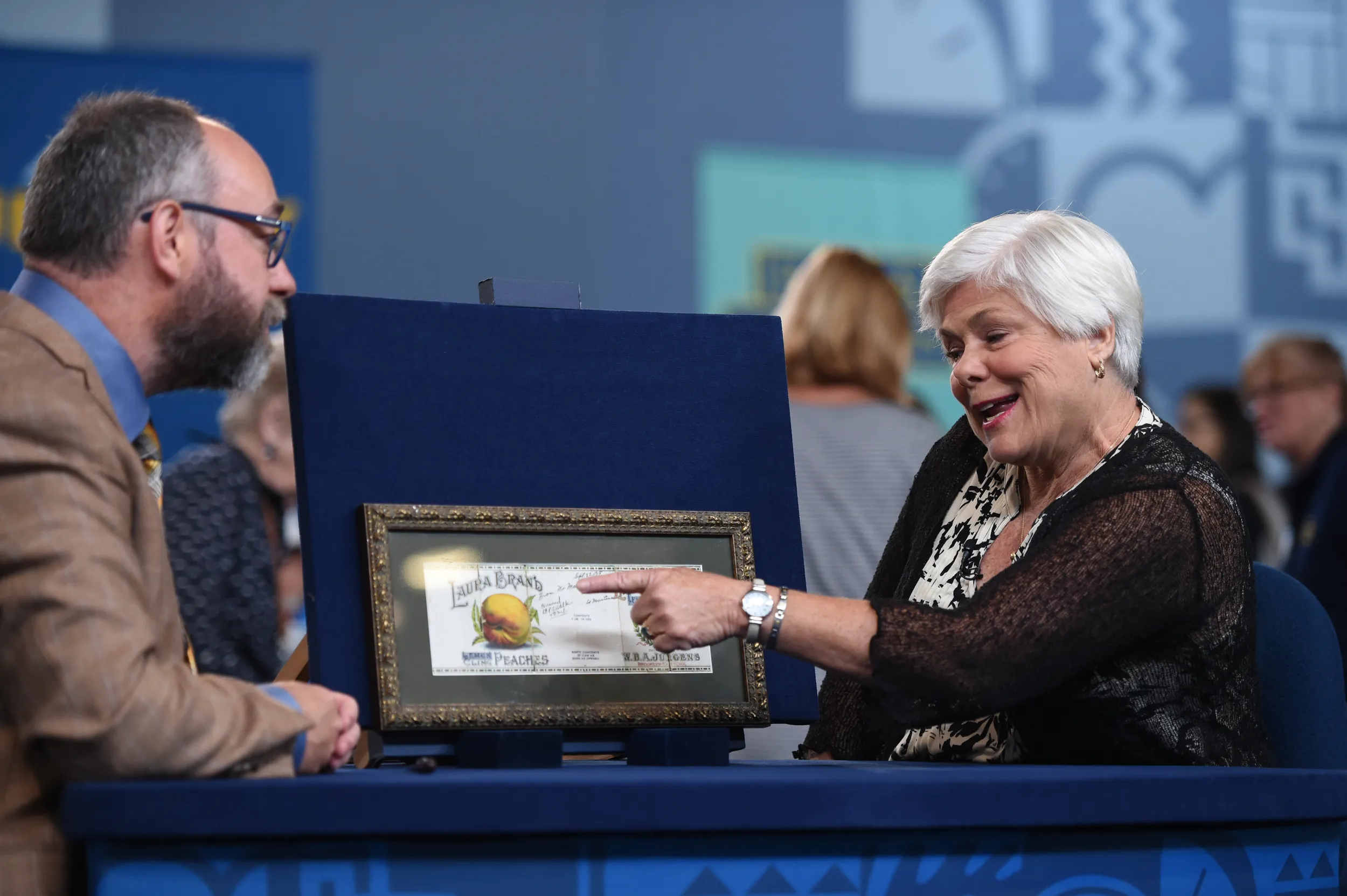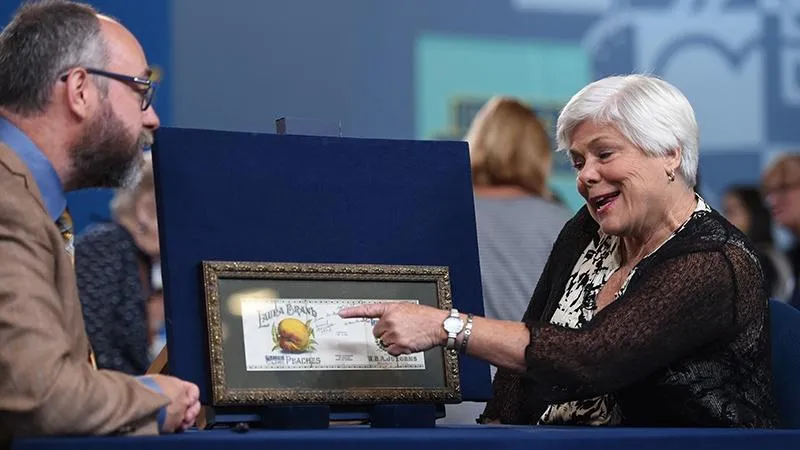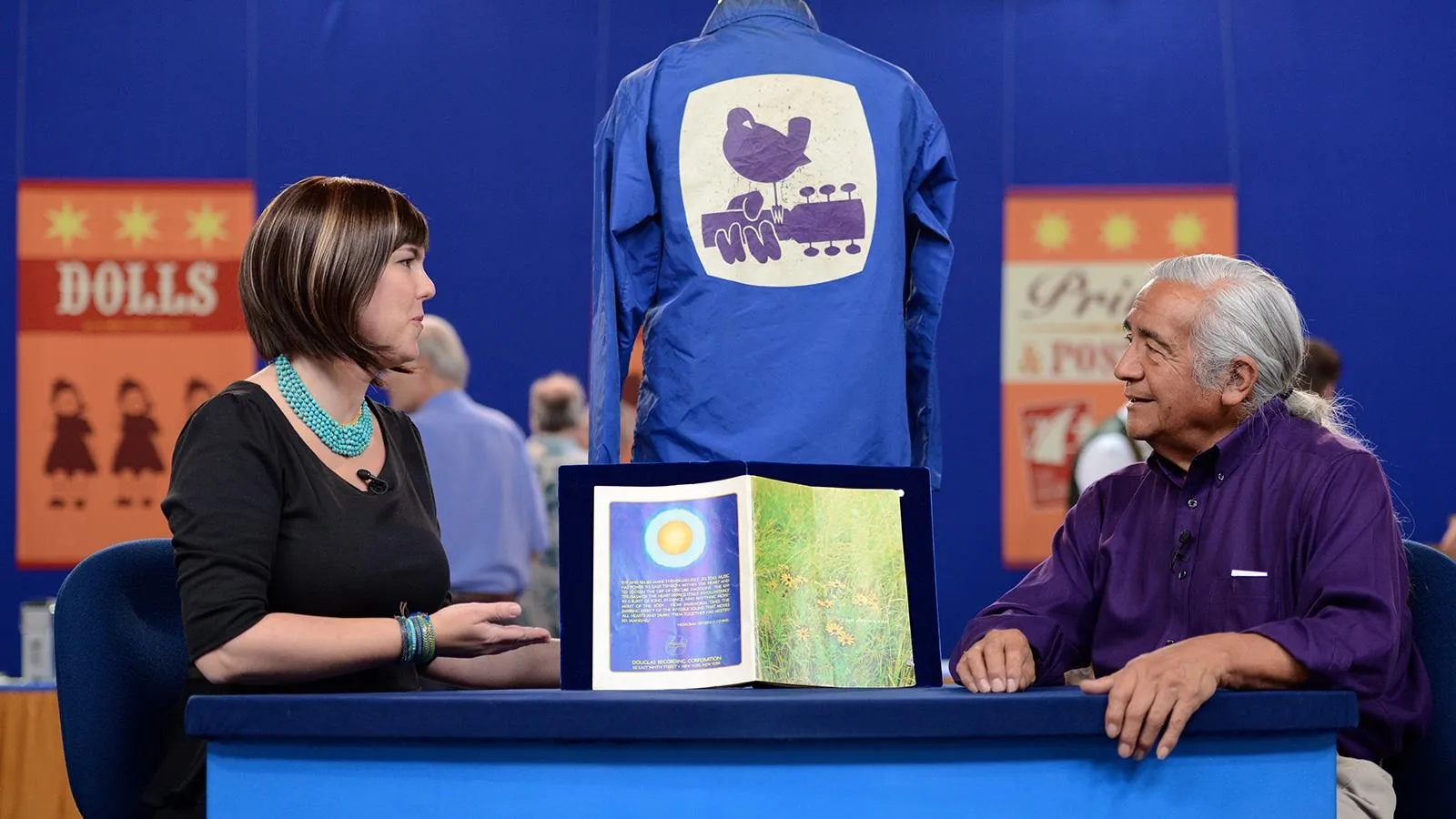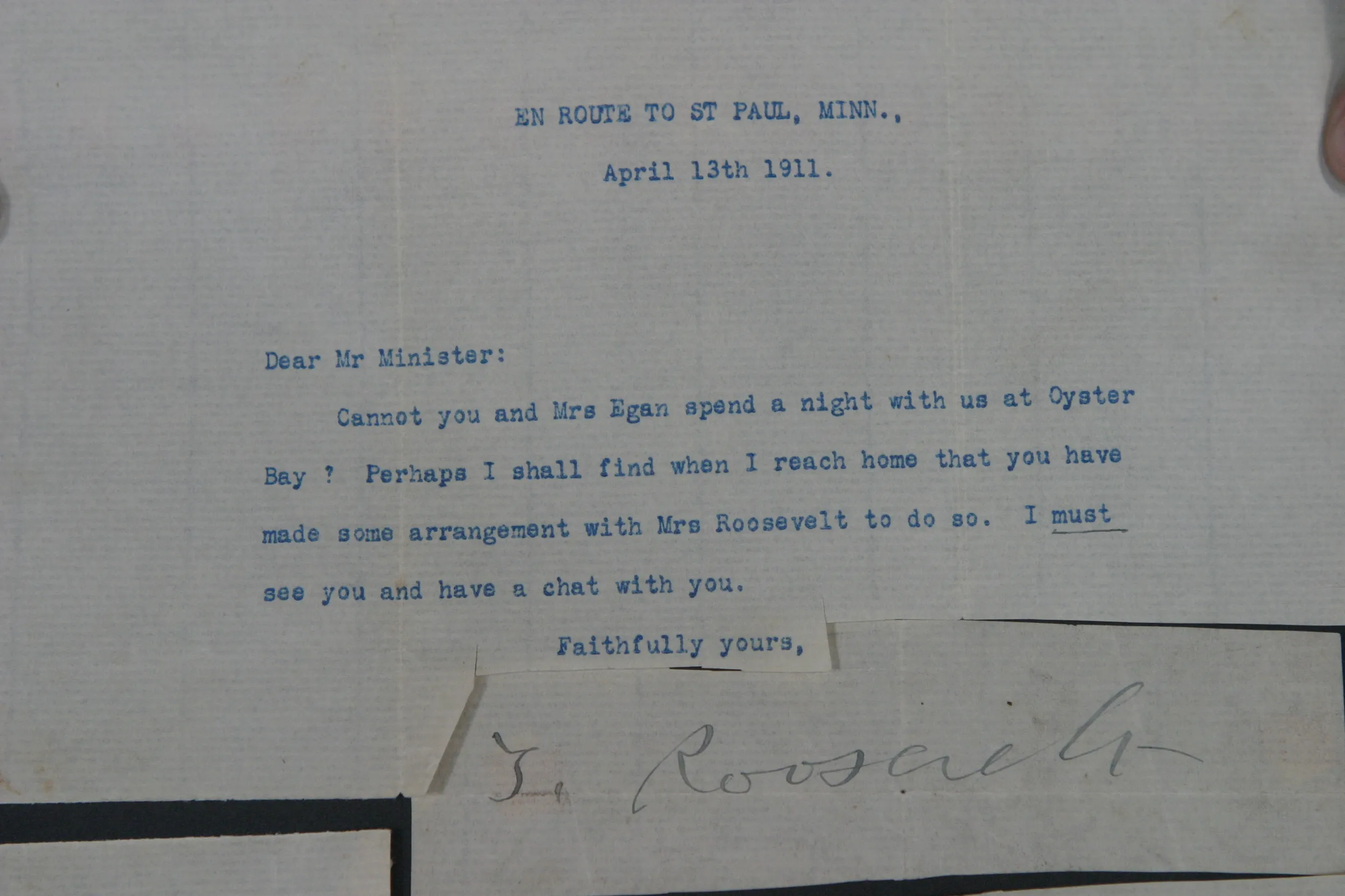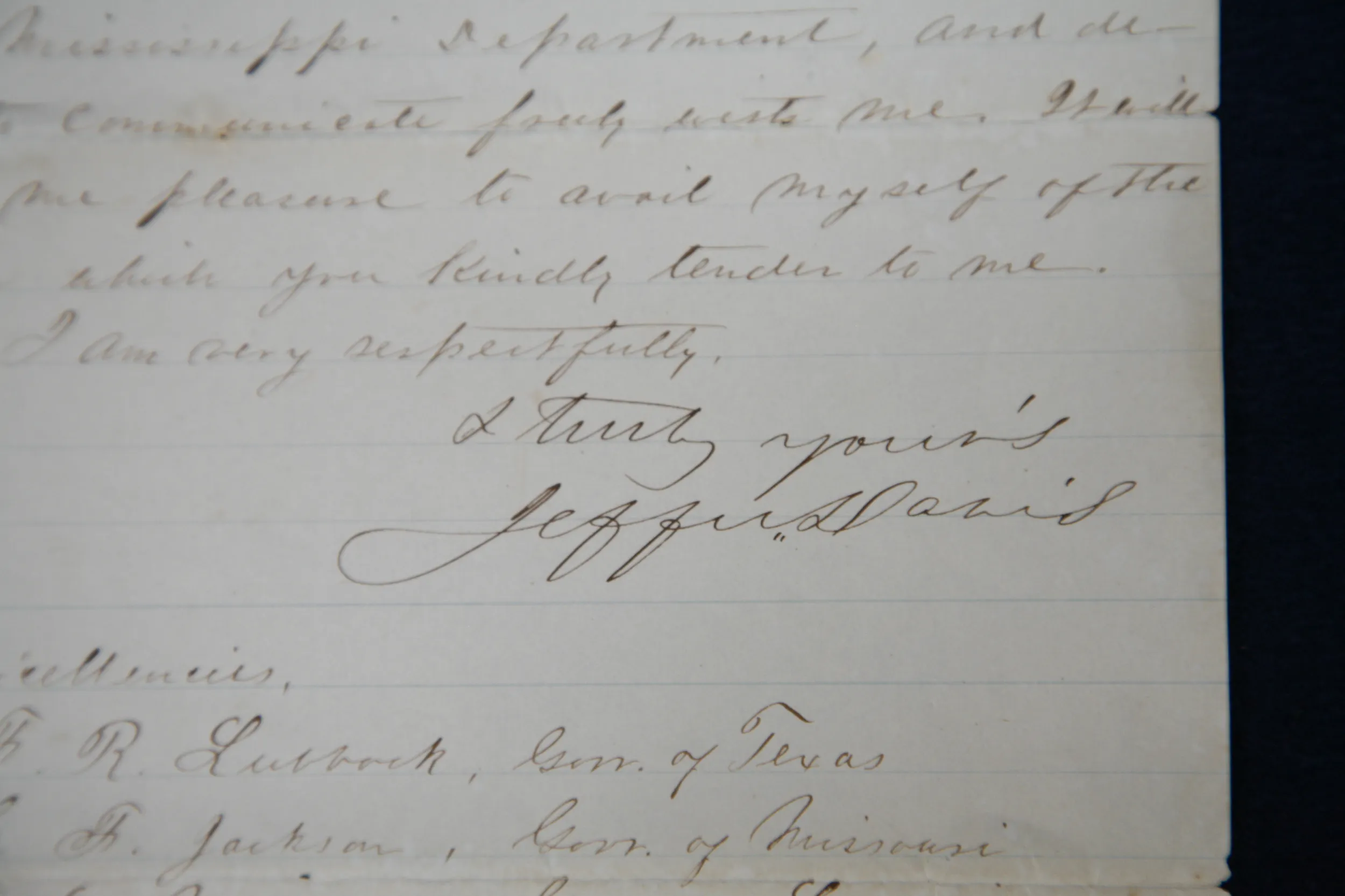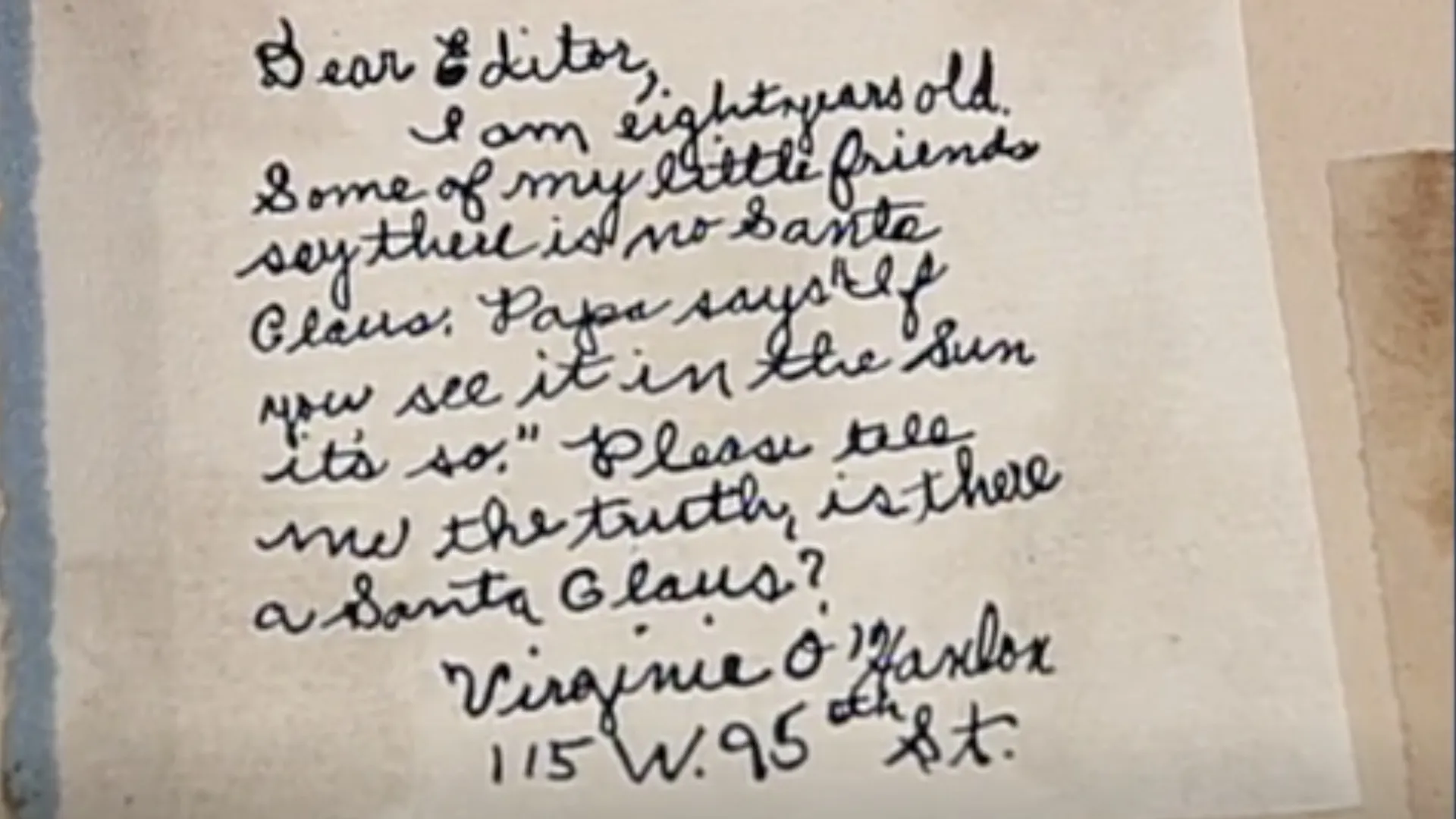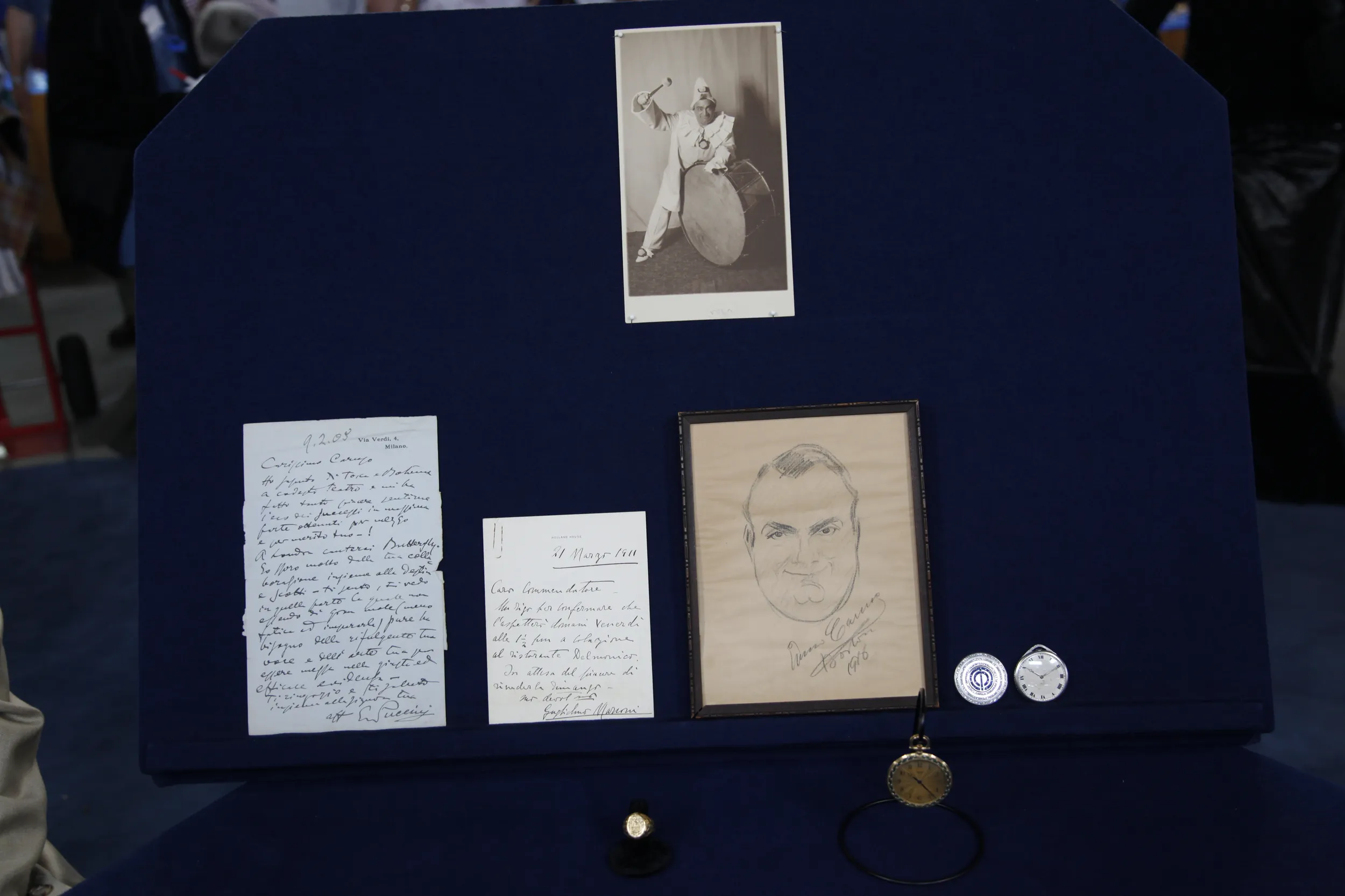GUEST: I brought a label from a peach can that has a letter on the back from World War I. My aunt passed away three years ago at the age of 95, but before she passed away, my uncle had died, and this had belonged to him, and it was all folded up, and I looked at it and I said, "My gosh, it's got a letter on the back." And she said, "Yeah," that my Uncle Bob had had it for years and years and that his father had probably given it to him, because I don't recognize the person's name on the back of the can, but they were both from Brooklyn, and the letter was sent to a man who worked for this company here, Jurgens, who were, I guess, a distributor. And the letter is all about enjoying this can of peaches in the trenches in World War I.
APPRAISER: The front is beautiful, just as a piece of graphic art from the turn of the century.
GUEST: Mm-hmm.
APPRAISER: And we see here that we have the individual who's, who sent it, the date, and then the censored mark. In this case, this is a lieutenant in the Fourth Infantry.
GUEST: Right.
APPRAISER: His job was to look at that and to make absolutely certain that there wasn't any information in the document that was inappropriate to go back to the folks at home. The back is really what gets us interested in this piece. And we've got a letter from a fellow here...
GUEST: Mm-hmm.
APPRAISER: ...who is writing from Machine Gun Company, Fourth Infantry Regiment, which was one of the more actively engaged American divisions in World War I. And apparently this fellow was quite taken by the peaches. He's writing, he says, "Dear Sir, Here I am on the firing line in the bottom of a trench, having just finished my day's rations of corned willy and hardtack, and having finished it all off by eating this can of peaches from your firm." So clearly, it, it meant a lot to him, enough to save the label and send it back. There's something else in here: "They tasted so good, I feel it my duty to congratulate you and your firm for putting such goods within our reach." But he signs it, interestingly, here. He says, uh, "Believe me, they are worth fighting for. Your friend, Eddie." Clearly, this meant an awful lot to him...
GUEST: Yeah.
APPRAISER: ...in the circumstances that they were in. Rations in World War I were not exactly high-level cuisine.
GUEST (laughs)
APPRAISER: They were more-- they were, they were-- they were concerned about two things: they were concerned about getting the food to the front, and having it be nutritious and provide the guys enough calories to keep going. But more importantly, they also wanted it to, to make it from point A to point B without getting you sick and turning it into a botulism grenade...
GUEST: Oh.
APPRAISER: ...and to be sealed up to where it would be resistant to the chemicals that were in the air where, the gas that would settle.
GUEST: Right.
APPRAISER: So canned goods were particularly well-suited to that, because they're all wrapped up. In the realm of value, these labels from fruit cans and crates and that sort of thing are collected, because they're decorative and they're, they're attractive, as just a nice period lithograph. But on its own, this would be about a ten-dollar item. It doesn't have a whole lot of value...
GUEST: Right.
APPRAISER: ...on its own legs.
GUEST: Right.
APPRAISER: But as something that was so significant to this individual that he wrote that congratulatory letter...
GUEST: Mm-hmm.
APPRAISER: ...and sent it back home, this is something that, frankly, shouldn't exist. He even talks in there about, "The trenches are littered with the wrappers from your peaches." As a document of front-line life for an American soldier in World War I, I would expect to see a retail value today for this in the neighborhood of $550 to $600.
GUEST: Wow! Not bad for a can of peaches.

